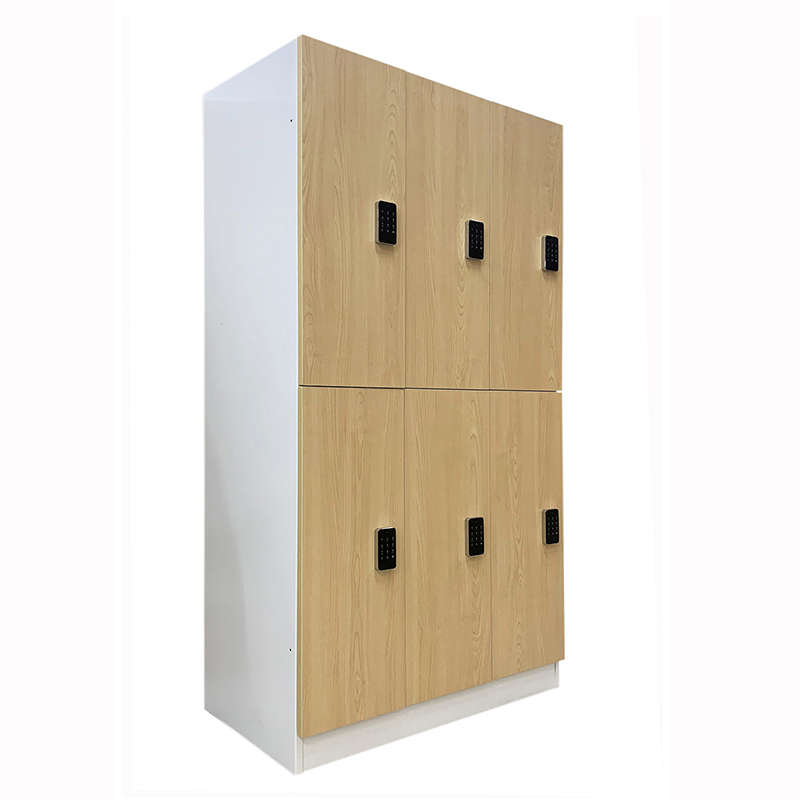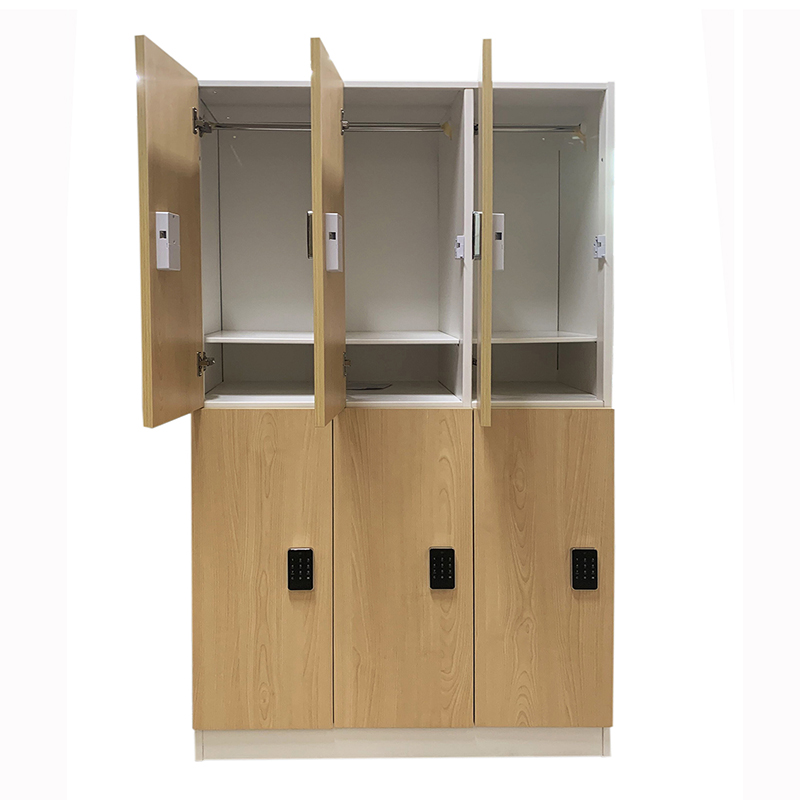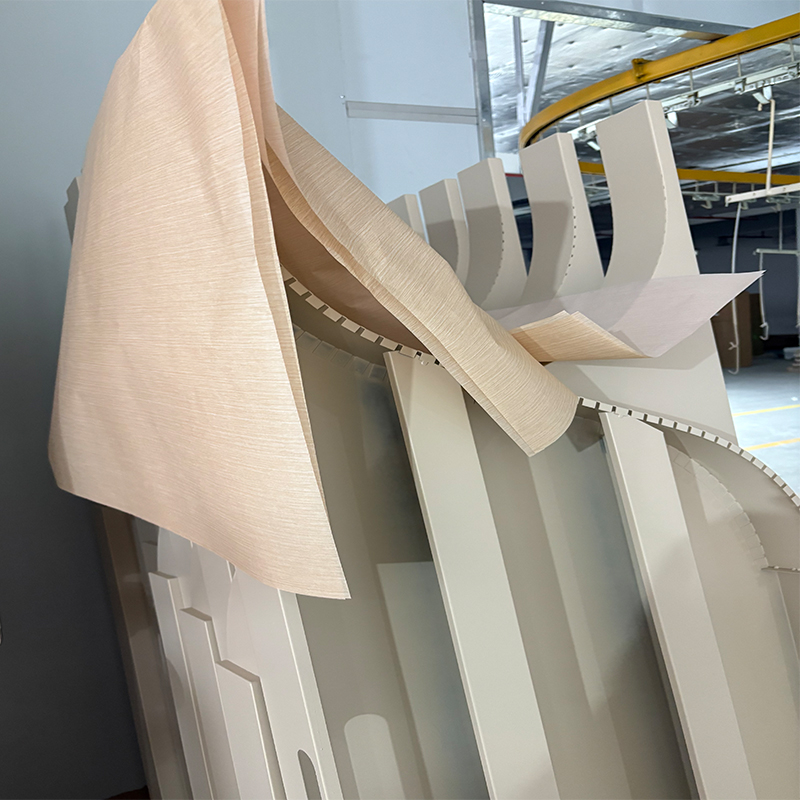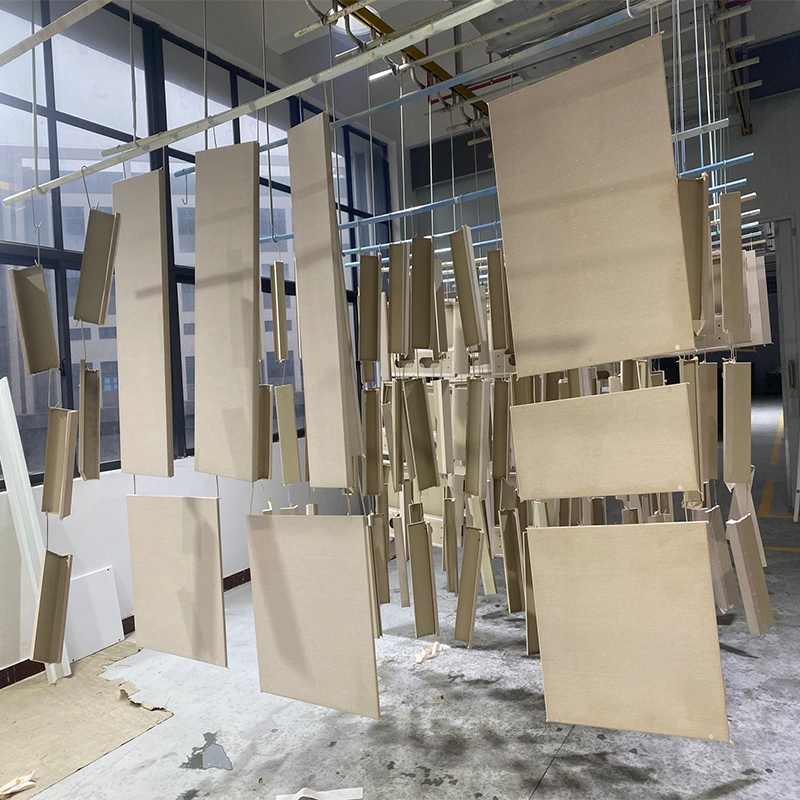Unbelievable! Matal locker transformed into gorgeous wooden!


You think this is a wooden locker? Think again—it’s actually metal!
With the elegance of wood on the outside and the durability of steel on the inside, choosing between the two has never been harder. But why choose at all? GoodLockers brings you the best of both worlds. Seamlessly combining the beauty of wood with the strength of metal to create a storage solution that is as stylish as it is sturdy.
Today, we’re pulling back the curtain to reveal how GoodLockers transforms solid metal into a cabinet that looks just like wood. From material selection to craftsmanship, every step is a perfect blend of technology and design. Get ready to witness the magic—your journey into the world of innovative storage starts now!
1. Revealed--transfer print technology
In fact, the secret behind their stunning appearance lies in transfer printing technology. This innovative technique allows intricate patterns and designs—such as natural wood grain—to be transferred onto a metal surface, creating a seamless fusion of beauty and durability.
Transfer printing is a specialized printing method that uses an intermediate carrier, such as a film or paper, to transfer images or patterns onto the final surface through pressure and heat. This process ensures high-definition textures, vibrant colors, and long-lasting adhesion, making it widely used in industries like furniture and customized metal products.
For metal locker, transfer printing enables the realistic replication of wood grain, allowing a cold, industrial material to take on the warmth and charm of natural wood.

transfer paper
Now that we understand the magic behind transfer printing. Let’s dive deeper into the step-by-step process of transforming a metal locker into a stunning “wooden” masterpiece!
2. How to turn an metal locker into a "wooden locker"?
2.1. Immersing the transfer paper
First, fully immerse the transfer paper into the adhesive solution. Make sure every part of the paper gets evenly soaked. Gently press down to help the adhesive penetrate the paper fibers, but be careful not to press too hard and tear the paper. Once the entire sheet becomes soft and slightly transparent, carefully lift it out and let the excess adhesive drip off. At this point, the design on the paper will appear glossy and feel smooth to the touch. This means it's ready for the next transfer step.
2.2. Applying the Transfer Paper
The pre-soaked transfer paper must be removed at the right time to ensure it remains soft and easy to apply. Carefully lay it flat onto the metal locker, aligning the pattern precisely to avoid any misplacement or distortion. Then, using a specialized scraper or soft cloth, gently smooth the paper from the center outward. Gradually removing air bubbles and excess moisture to prevent imperfections. Extra attention is given to edges and corners, ensuring the transfer paper adheres tightly to the metal surface for a seamless wood grain effect. Once applied, the paper is left to sit briefly. llowing it to fully bond in preparation for the heating and curing process.
2.3. Air Drying
After the transfer paper is properly applied, the cabinet is carefully hung in a well-ventilated area to dry naturally. This helps prevent the paper from shifting, wrinkling, or detaching due to moisture or pressure.
During drying, the cabinet should remain upright to ensure even adhesion and to allow any residual moisture to evaporate. This step also enhances the bonding strength between the pattern and the metal surface. Depending on the temperature and humidity, the drying time typically ranges from several minutes to an hour, reaching the ideal semi-dry state for the next stage.

2.4. High-Temperature Curing
Once the locker surface has air-dried to the right condition, it is placed into a high-temperature oven for heat treatment. Under the heat, the ink on the transfer paper is activated and firmly bonds to the metal surface, completing the transfer process. It’s important to maintain an even temperature throughout to prevent any distortion or blurring of the pattern. As the heat penetrates, the wood grain design becomes more vivid and natural, with a rich, realistic texture. This step sets the stage for the final removal of the transfer paper.
2.5. Removing the Transfer Paper
After the metal locker has been heat-cured and allowed to cool to a safe temperature, the transfer paper can be carefully peeled off. This step must be done slowly and evenly to avoid tearing the paper or damaging the freshly transferred pattern. As the paper is removed, the wood grain design is revealed in full detail—clear, natural, and firmly bonded to the metal surface. A quick visual inspection is performed to check for uniform coverage, bubbles, or defects. Minor imperfections, if any, can be corrected in the following steps. With the transfer paper removed, the metal locker now showcases its realistic wood finish and is ready for final surface treatment.
With the final step complete, the metal locker has undergone a stunning transformation—reborn as a beautiful “wooden locker” . Thanks to advanced transfer printing technology, the once cold, industrial surface is now infused with the warmth and elegance of natural wood, achieving a seamless fusion of durability and aesthetics.
This innovative technique solves a common dilemma for many customers: choosing between the sturdiness of a metal locker and the refined appearance of a wooden one. Now, there’s no need to compromise. The cabinet retains the strength, longevity, and cost-efficiency of metal. While offering the rich texture and high-end visual appeal of wood.
Whether it’s used in offices, schools, retail spaces, or even luxury interiors. This wood-grain metal locker effortlessly adapts to a wide range of environments—delivering both performance and style. Transfer printing doesn’t just change how cabinets look; it redefines what they can be.
3. Why choose wood-grain metal locker?
- Cost-effective: Wood grain metal locker combines the advantages of wood locker and metal locker. The price is cheap and affordable, and the service life can generally be up to ten years.
- Good appearance: Wood grain makes the metal cabinet have a more elegant appearance. Wood grain can create a warm atmosphere, which can be applied to various occasions and raise the grade.
- Customizable: You can choose the transfer paper style you like, which has higher selectivity and you can also spend less money to achieve the purpose of customization.
- Easy maintenance: Compared with wooden cabinets, the daily maintenance of metal locker is simpler and more convenient. It has a hard texture and can withstand high-frequency use. And the surface of the wood grain avoids direct contact between the iron cabinet and moisture, which can effectively prevent rust.
4. Conclusion
Why settle for the ordinary when you can have the best of both worlds? Woodgrain metal locker perfectly combine the advantages of wood locker and metal locker to provide you with a storage solution that looks as good as it performs.
Don't hesitate, take action now to change your space. Woodgrain metal cabinets are suitable for various scenarios and support customization, helping you create a storage space with a distinctive personality.

